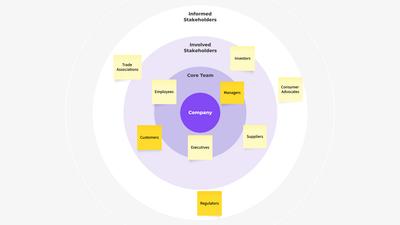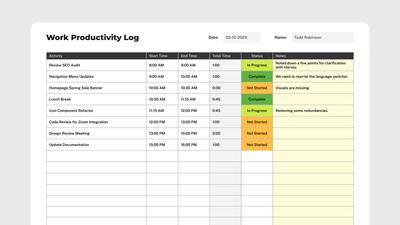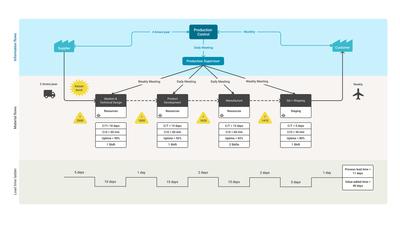- No results found.
Stakeholder Mapping Template
Use a stakeholder mapping template to identify, prioritize and understand the people working on your project. Improve team communication and engagement.
Our stakeholder mapping template will help you identify, prioritize, and understand your project's key stakeholders. A thorough stakeholder analysis will ensure a good start for your project, guaranteeing the involvement of key players from the very beginning.
What is a stakeholder mapping template?
Stakeholder mapping is the process of identifying key stakeholders in a project. Anyone with an interest in the outcome of that project can be a potential stakeholder. Similarly, any person with a certain degree of influence may also be considered a stakeholder. Identifying who these characters are is a vital stage towards ensuring a successful start to any new business initiative.
Benefits of using a stakeholder map template
Understanding who are the stakeholders in a project is a vital component to its success. Failing to involve key figures from the early stages of development can have catastrophic consequences that may lead to permanently compromising this initiative. However, working with a stakeholder mapping template will not only help teams avoid this, but it will also bring them one step closer to their project's success.
Here are the primary benefits teams can enjoy when the stakeholder mapping techniques have been previously applied:
- Acquiring a shared understanding of the key players who can positively impact the project and make it successful.
- Providing a solid foundation for team level communication and engagement strategy.
- Prioritizing stakeholders to ensure that resources are distributed according to their roles.
- Identifying and preventing any harmful risk factors caused by other stakeholders who may feel unheard.

What are the steps in stakeholder analysis?
Every stakeholder analysis includes three main steps: identification, prioritization, and a deepened understanding of the key stakeholders.
1. Identifying stakeholders
Brainstorming is the most efficient technique when working towards identifying who the stakeholders of a project should be. They can be people or organizations showing interest in the development and the outcome of an initiative, who hold power or can influence projects to a certain degree.
2. Stakeholder prioritization
Once the list with all the potential stakeholders is completed, it's time to start the prioritization process based on their level of involvement. To simplify this stage, here are the main categories that stakeholders can be placed into:
- Direct stakeholders: these people are fully engaged in the project. They must always stay up-to-date with the latest developments, as their contribution is highly impactful.
- Indirect stakeholders: these are any external factors that may impact the project. They cannot be controlled, which makes them very unpredictable.
- Users: as they are at the epicenter of any business, any product or service-related decision should be made to their immediate benefit.
3. Understanding stakeholders
When working with a stakeholder mapping template, in addition to identifying and categorizing all involved parties, it is crucial to be aware of people's views on the project. This can have a tremendous impact on the dynamics of all relationships developed among participants. Knowing how to communicate and engage with co-workers is a vital component in the success of any initiative.
Here are some questions you can address to project participants, as part of the stakeholder analysis process:
- What is their main motivational driver?
- What are the emotional or financial implications when contributing to this project?
- What information do they require from you?
- What is the best way to communicate with them?
- Are there people influencing their opinions? If yes, then who are they? Will they become indirect stakeholders in your project?
Using a stakeholder mapping template in Moqups
When working with our template, you will be able to experience a wide range of additional features that can be extremely useful along the way. Leave comments, make annotations, or use the sticky notes feature to write down ideas you can quickly get back to later on.
Moqups offers real-time collaboration so you can build your stakeholder map template online. Once you've managed to go through all of the stages required by stakeholder mapping, you can share this template with your established team members.




